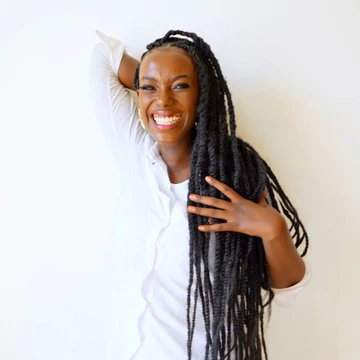Alright, let’s get into it. You’ve probably seen the term antibacterial braiding hair floating around on TikTok or slapped across a few hair packs at the beauty supply store. It sounds fancy, right? Like something out of a sci-fi lab — “This braid will fight germs while making you look flawless.”
But let’s be real. Is it just another marketing buzzword, or does it actually do something?
Well, after a few itchy installs, some Reddit threads deep-diving into scalp fungus (yes, that’s a thing), and a salon experience that had me scratching like I had fleas (I did not), I’ve done the research. Spoiler: antibacterial braiding hair is not a gimmick. It’s the upgrade we didn’t know we needed.
Especially when you’re using hair from brands like New Village Braid, which actually prioritize this stuff.
First Things First: Why Are We Itching?
You know that feeling — you get your braids freshly done, and they look bomb. But two days later? Your scalp’s throwing a tantrum. Itching like crazy, red bumps popping up, and you’re Googling “can braiding hair cause scalp infections” at 2 a.m.
The culprit? Usually the chemicals used in synthetic hair. A lot of synthetic braiding hair is coated in alkaline substances to preserve it and make it easier to produce. Problem is, that stuff can irritate the hell out of your scalp — especially if you have sensitive skin.
This is where antibacterial braiding hair swoops in like a hero in a satin cape.
What Makes Hair “Antibacterial”?
No, it doesn’t mean the hair is dipped in hand sanitizer. Basically, the fibers are treated with a special coating that resists bacteria, mold, and mildew — all the gross stuff that can build up when you’re rocking a protective style for weeks. Especially if you work out, sweat a lot, or forget to wrap your hair (guilty).
It also helps reduce the risk of those little red bumps around the hairline that nobody talks about, but everyone gets at some point. It’s like low-key hygiene insurance for your scalp.
Brands like New Village Braid have figured this out and made it standard in their braid hair. Which honestly? Bless them.
Is It Worth the Hype?
I didn’t believe it at first either. But after my third install using antibacterial hair, I realized something major — no more scalp drama. No more soaking the hair in vinegar beforehand (you know what I’m talking about). No more dandruff flaking off like it’s snowing on my black hoodie. It’s been peace and quiet up there.
And apparently, I’m not alone. TikTok’s full of braid stylists praising antibacterial hair, and even on Twitter, people have been posting “before vs. after switching to anti-itch braid hair” like it’s skincare.
Okay, But What About the Look?
I know some of y’all are skeptical. “But does it look as good?” Because we all know some “healthy” options look a little… sad.
Here’s the good news: Antibacterial doesn’t mean ugly. New Village Braid’s antibacterial braiding hair still slaps when it comes to style. It’s smooth, pre-stretched (a must), not too shiny, and it holds up for weeks. Whether you’re doing box braids, knotless, twists, or goddess braids — it works.
I used it for waist-length knotless braids on my last vacation, and not only did it look fresh the entire time (even in humid island weather), but my scalp felt like it was on a spa retreat. Zero itch. No weird smell. No buildup.
Less Washing, More Wearing
Here’s a bonus I didn’t expect: antibacterial braiding hair stays fresh longer. If you’re like me and don’t love washing your braids every week (or let’s be honest, at all), this is game-changing.
Since it resists bacteria and mold, your hair doesn’t get that musty scent that sometimes creeps in by week 3. You know that “hmm… did something die in my braids?” moment? Yeah, this prevents that. You can still spritz with braid spray or dry shampoo if you want, but honestly, it just holds up better overall.
A Little Bit of Science, A Lot of Comfort
Not to sound like a nerd, but I actually looked into this. Studies show synthetic fibers that are untreated can trap bacteria and moisture, leading to yeast growth and other gross stuff. Antibacterial treatment interrupts that whole cycle. Think of it like having a built-in bouncer keeping the nonsense away from your scalp.
One stat I found said people using antibacterial hair reported 35% less scalp irritation over 3 weeks of wear. Not sure how accurate that number is across the board, but it checks out with my experience.
Let’s Wrap This Up (Literally and Figuratively)
Look, at the end of the day, our hair deserves love and protection. We spend time and money getting these styles done — the last thing we need is for our scalp to start beefing with us on day three.
If you haven’t tried antibacterial braiding hair yet, give it a shot. Especially from a brand that knows what it’s doing, like New Village Braid. They’re not just slapping “antibacterial” on the label and calling it a day — their hair actually lives up to the promise.
You’ll thank yourself when you’re not scratching in public like you’ve got secrets.
Trust me. Your scalp will be living its best life — and your braids will still be turning heads.

